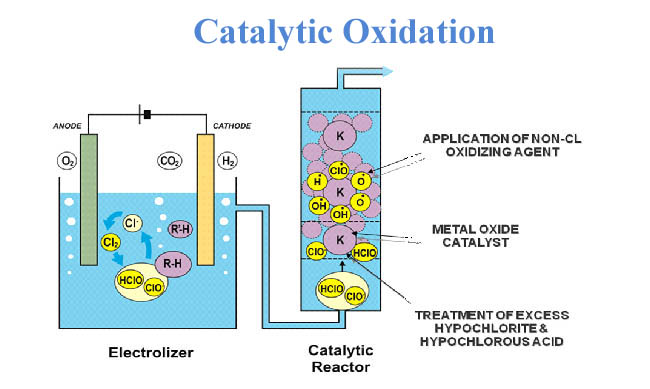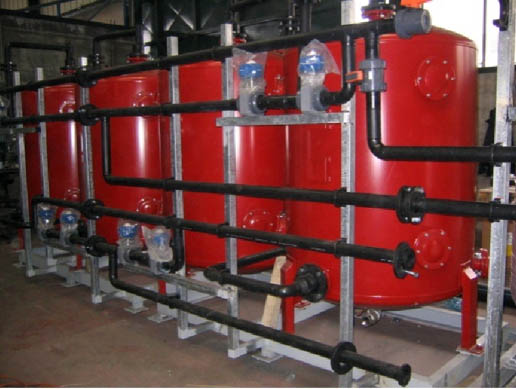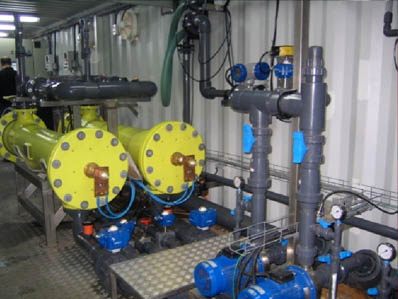ELCAT™- non biodegradable and toxic wastewater treatment
 ELCAT Stage 1
ELCAT Stage 1
Electrochemically treats wastewater in electrolyzer with insoluble electrodes under anodic polarization
• Easily oxidizable compounds are treated
• Chloride ions (Cl-) in the wastewater form Cl2 which in turn forms the strong oxidizing agents (hypochlorite and hypochlorous acid)
Cl2 + H2O HClO + H+ + Cl-
HClO + OH- ClO- + H2O
• Electrochemically generated ClO- and HClO oxidize wastewater pollutants (R-H)
• This cycle is repeated resulting in high efficiency oxidation and in a very short time
 ELCAT Stage 2
ELCAT Stage 2
Enhances treatment and provides dechlorination
• Metal oxide catalytic decomposition of ClO- and HClO occurs and free radicals (ClO-, Cl-, OH- and O-) form
• Dechlorination occurs through reduction of ClO- and HClO
• Final polishing occurs through reaction of the free radicals with remaining oxidizable substances
ELCAT Applications
- Herbicides
- Insecticides
- Textiles
- Organic dyes
- Phenols
- Ammonium
- Polishing

ELCAT™ is currently installed in several industrial wastewater treatment facilities in chemical, food and textile industries.
Typical removal efficiencies of waste constituents are:
|
Dyes |
98-100% |
|
COD |
75-85% |
|
Detergents |
75-85% |
|
Phenols |
90-99.9% |



